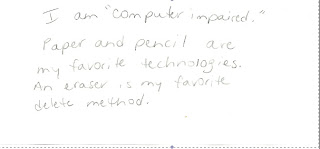Yesterday, as I was eating breakfast, I was watching HLN. When I first turned it on, there was an ongoing interview about the soon to be released Google glasses. The description sounded like a pair of glasses that stream information about your location. The following is some highlights from an article from The New York Times. You may read the full article by clicking on the link. I think technology like this could be used on a field trip. Also, students could take turns taking the glasses home overnight or through the weekend to experience information and then report back to the class some points of interest. According to HLN, the selling price is supposed to be $1500. This made me consider the possibility and feasibility of insuring such an item against loss, theft, or damage.
Google to Sell Heads-Up Display Glasses by Year’s End
By NICK BILTONPeople who constantly reach into a pocket to check a smartphone for bits of information will soon have another option: a pair of Google-made glasses that will be able to stream information to the wearer’s eyeballs in real time.The people familiar with the Google glasses said they would be Android-based, and will include a small screen that will sit a few inches from someone’s eye. They will also have a 3G or 4G data connection and a number of sensors including motion and GPS.They will also have a unique navigation system. “The navigation system currently used is a head tilting to scroll and click,” Mr. Weintraub wrote this month. “We are told it is very quick to learn and once the user is adept at navigation, it becomes second nature and almost indistinguishable to outside users.”The glasses will have a low-resolution built-in camera that will be able to monitor the world in real time and overlay information about locations, surrounding buildings and friends who might be nearby, according to the Google employees. The glasses are not designed to be worn constantly — although Google expects some of the nerdiest users will wear them a lot — but will be more like smartphones, used when needed.One Google employee said the glasses would tap into a number of Google software products that are currently available and in use today, but will display the information in an augmented reality view, rather than as a Web browser page like those that people see on smartphones.The glasses will send data to the cloud and then use things like Google Latitude to share location, Google Goggles to search images and figure out what is being looked at, and Google Maps to show other things nearby, the Google employee said. “You will be able to check in to locations with your friends through the glasses,” they added.





